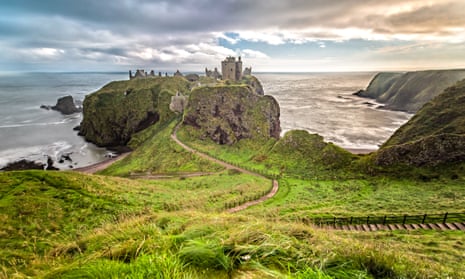Aberdeen
How about a city with two medieval colleges and castles, two picturesque rivers and miles of sandy beach?
On a sunny day, Aberdeen’s granite buildings sparkle as the light glints off specks of mica in the stone. Walk or cycle beside the city’s long sands from the old fishing village of Footdee to the basking seals at Donmouth nature reserve. There are several places to hire bikes and 150 miles of Aberdeenshire coastline.
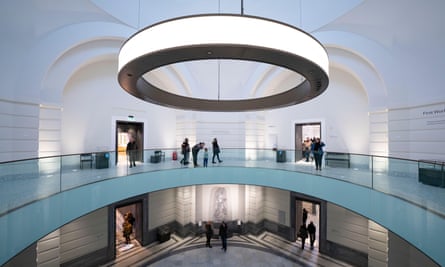
Of the county’s 263 castles, ruined Dunnottar on its craggy peninsula in the North Sea is one of the most dramatic (adult £8, child £4). The best way to get there is to walk a couple of miles along the cliffs from the market town of Stonehaven, 20 minutes by train from Aberdeen. You can walk back to Stonehaven through Dunnottar Woods, past an old shell house and aristocratic bathing place. Afterwards, dodge the gulls as you eat award-winning fish and chips outside The Bay, followed by carrot cake ice-cream or mango frozen yoghurt from Giulianotti, an Italian sweet shop that opened in 1899.
Don’t miss the cobbled lanes round the university in Old Aberdeen or the city’s neoclassical Art Gallery (free, but book online), reopened in 2019 after four years and a £35m restoration. Paintings range from a Francis Bacon pope to James Guthrie’s goose girl, a Monet seascape to a glowing, glowering pre-Raphaelite damsel by Dante Gabriel Rossetti. And the touring British Art Show is here from 10 July-10 October.
Where to stay

The modern Sandman Signature (doubles from £61 room only), just round the corner from the art gallery, or the fancier Chester Hotel among the Victorian terraces of the Rubislaw area (doubles from £99 room only). For something funkier, the Kennels above Brewdog’s Castlegate bar (studio from £89 room only), opened in late 2019. Rooms come with beer fridges, room-service draft beer, bike hire, a record player and an optional dog bed. Brewdog’s global HQ in Ellon, 16 miles north, offers brewery tours with tastings (£15).
Sheffield

The railway line from Sheffield to Manchester along the Hope valley brings great Peak District walks within easy reach. Emerging from a tunnel 15 minutes out of Sheffield, the train arrives at flowery Grindleford station, whose cafe is known for its chip butties and tea by the pint or half-pint. A rugged six-mile circuit from the station takes in the mossy woods of Padley Gorge and the heathery slopes of Hathersage Moor.
Holly Hagg community farm on Sheffield’s western edge offers trekking with alpacas through the leafy Rivelin valley (from £35 for two). One of Sheffield’s five new cycling routes also runs through this valley. Victorian Kenwood Hall hotel (doubles from £59 room only, activity breaks from £199), a couple of miles from the city centre near Sharrow Vale’s indie bars and cafes, offers packages involving paddleboarding, abseiling or “weaselling” – a Peak District term for rock scrambling. It’s close to Endcliffe Park, start of the 15-mile Sheffield Round Walk, a rewarding loop along the wooded Porter Brook to rural Ringinglow.

For urban buzz take Sheffield’s Supertram to Shalesmoor, a short walk from post-industrial Kelham Island, with five beer gardens and two rooftop bars. The island’s museum boasts Europe’s biggest working steam engine and is just one of Sheffield’s innovative galleries, many of them free.
Outdoor exhibitions are popping up on the streets this summer. Creative agency Jack Arts’ billboard-style installations celebrate community in the same bright colours as the city’s regenerated Park Hill housing estate; and 60 Berlin-style bears will form a city-wide sculpture trail from July. The city’s hilly parks make for panoramic picnics, and there’s scope for alfresco dining with popular venues, including the Leadmill, expanding on to surrounding pavements.
Where to stay
Launching this summer in the Krynkl shipping container complex on Kelham Island is food-focused boutique hotel House of Jöro (doubles from £140 with breakfast and lunch), with four bedrooms within staggering distance of Michelin-listed Jöro restaurant.
Ely, Cambridgeshire
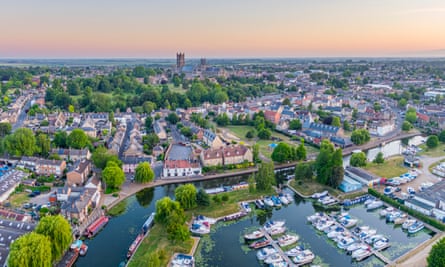
Surrounded by water meadows and fenland villages, and with two ancient cathedral towers to climb and plenty of riverside places to drink, Ely can be a holiday idyll, as well as a quieter base for visiting Cambridge.
Head to Market Place for fruitcake made with homegrown nuts and cherries from Covenham House Orchard, and local apple juice from Pippin Tree Press. Then drive south to see waterlilies, wading birds and ponies among the reedbeds at Wicken Fen, the National Trust’s oldest nature reserve (£5/£2.50 adult/child, booking advised).
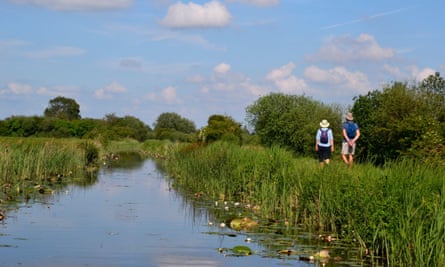
Close to Wicken Fen is Dojima, the UK’s first Japanese-owned sake brewery opened in 2018 in Fordham Abbey, offering tours and tastings (£30pp, booking essential). The nearby village of Swaffham Prior has two churches, two windmills, a big-gardened pub and a seven-mile Anglo-Saxon defensive earthwork called the Devil’s Dyke. Blocking a land route through the fens, it still stands nine metres high in places and makes a peaceful walk with wide views, chalkland flowers and butterflies.
Ely Museum closed in 2019 for a £2.2m redevelopment, reopened on 21 May 2021. It is full of relics of fenland life, such as multi-pronged eel spears and the stilts and skates people used to cross the marshes (adult/child £5.50/£2.50).
The cathedral (adult £8, under-16s free) was built for the Benedictine order in 1083 – when Ely was an island hamlet in the fens – and is a marvel of medieval engineering. It’s worth booking a guided climb up the 170 steps of its 14th-century Octagon Tower (initially £75 for family bubbles, including cathedral admission). There are views from the roof and into the cavernous interior through angel-painted panels.
Where to stay
Among a growing number of places to stay, City Studios has three flats near the market (from £95 a night). Or there are rooms with a private deck at Swan on the River five miles down the Great Ouse in Littleport (doubles from £85 B&B). You could even try Champing (church camping) in Georgian Saint Cyriac & Saint Julitta at Swaffham Prior (from £49pp).
Newport, Monmouthshire
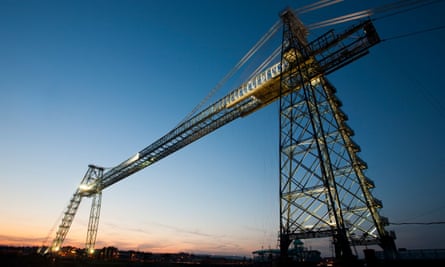
With coastal wetlands, forests and canals within easy reach, Newport is surprisingly green. It struggles to compete for visitors with nearby Cardiff and Bristol, but has its own treasures: Victorian parks such as Belle Vue, the bracken-and-buttercup slopes of Allt-Yr-Yn nature reserve and, just a mile’s canalside walk away under the M4, the spectacular Fourteen Locks canal flight. A short bus ride from the centre is Roman Caerleon, home to the second Augustan legion for two centuries (amphitheatre open and free to enter; check website for reopening date of fortress and baths).
It’s more than a decade since the hilarious Jay-Z and Alicia Keys’ parody Newport State of Mind went viral, but it’s still the city’s top association for some. The singers namecheck (and helped reopen) Newport’s 1906 transporter bridge, which carries people over the River Usk in a gondola.
Follow the Newport coast path beyond bridge and docks to reach marshy meadows full of orchids and butterflies, and level waterside walking near East Usk lighthouse, with views over the Severn estuary to Somerset.
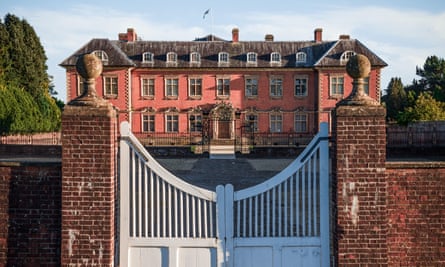
Behind the Office for National Statistics, the gardens of the National Trust’s Tredegar House (park free, gardens adult £5, child £2.50, booking essential) are an oasis fragrant with orange blossom and lavender. In 2019 a community hub opened in a renovated outbuilding, where volunteers gather to plant colourful borders and grow veg in the allotments. Don’t miss the towering redwood trees. The late-17th-century mansion is still closed, but once reopened has elaborate wood carvings and a kitchen full of copper pots.
Other wet-weather options include the cathedral with its Norman nave, and a free art gallery with paintings by LS Lowry and hundreds of novelty teapots (email to book). Cross the giant footbridge nearby, the newest of Newport’s seven bridges, for coffee and homemade pancakes in Horton’s.
Where to stay
An imposing stone building on High Street, previously a wine bar and night club, has been smartly converted into the Silurian Hotel (doubles from £55 room only, family room for four from £75). Over the road the Tiny Rebel Bar does beer and burgers (Korean-style chicken with kimchi or homemade seitan with crispy onions).
Carlisle
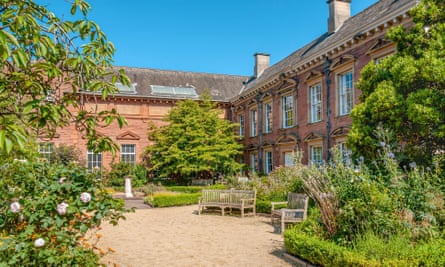
This ancient border city, now county town of Cumbria, stands on the course of Hadrian’s Wall, at the confluence of two rivers and several spectacular railways.
The old Scottish ballad about the bonnie banks of Loch Lomond was written by prisoners in red-sandstone Carlisle Castle, the UK’s most besieged fortress (adult £12.60, child £7.60). It has great views from the towers and mysterious carvings on the walls of the keep.
Over the road, Tullie House museum (adult £10, children free) has Roman figurines, Jacobean stairways and two new costume galleries with embroidered Victorian dresses and a 2020 nurse’s scrubs from Cumberland infirmary.
The nearest green idylls are Bitts and Rickerby, both on the banks of the Eden River and offering a waterside landscape of gardens and grazing cows, elegant bridges and memorials. The 84-mile Hadrian’s Wall Path runs through both parks then on west to the gorse-fringed, sunset-facing sands of Bowness-on-Solway (or east to Birdoswald Roman fort, and – eventually – Newcastle).

Twenty minutes’ drive east of the city is Gelt Woods, with waterfalls, foxgloves, ferns and beech trees. The Romans quarried rock for the wall here, and you can still see chisel marks in the sandstone. Nearby Talkin Tarn has boats to hire and outdoor theatre in summer, while a climb up cairn-topped Talkin Fell rewards hikers with glimpses of the northern lakes and borders.
Back in the city, a new glass-walled cafe in the cathedral serves scones or Cumberland sausage baps until 3pm. And, in a cobbled alley round the corner, Print Yard has cold beers and cocktails with street food such as triple-dipped fried chicken and banoffee waffles.
Where to stay
A couple of minutes’ stroll away, in a historic square by the impressive railway station, the former, faded Hallmark Hotel reopened this week as the Carlisle Station Hotel (doubles from £50 room only). For something more rural, Cardewlees campsite (insulated wooden pods sleep 2 or 3 from £63, pitch with electric hook-up £23), 15 minutes’ drive out of the city, opened in 2019 on a farm with views of the fells.
Salisbury

First stop: Salisbury’s Charter Market (Tues and Sat) held regularly since 1227. Armed with pork pies and traditional lardy cake from Shelley’s Bakery, head for the iron age hillfort and Norman ruins at Old Sarum (adult £6.50, child £3.90, booking essential) to enjoy huge views across Salisbury and the plains. You can walk from town along the River Avon then carry on for a couple of miles upriver to the Devenish, a nature reserve with harebells on the chalky slopes and buzzards overhead.
Even before Covid, Salisbury’s tourist industry had suffered, with visitors staying away after the 2018 poisonings. But the Russian suspects’ risible TV interview did remind us that Salisbury cathedral is “famous for its 123-metre spire”. It’s the tallest in Britain, in fact, and has the UK’s biggest cathedral cloisters, the world’s oldest working mechanical clock, and the best-preserved of four surviving copies of Magna Carta.
Admire the spire from several angles as you stroll through the Queen Elizabeth Gardens, with free afternoon concerts in July, and along the Town Path through the water meadows, for a view that John Constable painted. The Old Mill hotel, at the far end of the path, serves homemade charcoal-cooked burgers in its riverside garden).
Where to stay

Within a 20-minute drive of Salisbury is Stonehenge Campsite (pitch from £17.50, pod for two from £65), near the celebrated stone circle. There’s also a vintage caravan and – new this year – a converted double-decker bus. To stay in the city, try the timber-framed Rose and Crown inn (doubles from £72 room only), for pub grub by the water and beamed, oak-panelled bedrooms. Ideal for car-free visitors is Caboose B&B (doubles from £80 B&B), by the station, which offers locally sourced drinks, immaculate rooms, afternoon teas and a free cocktail when you book direct.
Hull

The 80-mile Yorkshire Wolds Way has all the benefits of being a National Trail: clear waymarks, great landscapes, well maintained, but it’s far less crowded than more famous walks like the Thames Path or Pennine Way. It starts from Hessle, just outside Hull, and runs under the monumental Humber Bridge and west along the mud-shored estuary, before turning north through sycamore woods, grassy valleys and sloping fields of poppies.
Summer brings little terns, red-veined darter dragonflies and even porpoises to the ever-shifting sands of Spurn Point, 20 miles east of Hull. This wild, wide-skied peninsula is cut off at high tide and grazed by Hebridean sheep and longhorn cattle.
Hull was UK City of Culture in 2017, attracting 5 million people at thousands of events. The mural-splashed, marina-side Fruit Market, with its big outdoor stage, is typical of the city’s creative regeneration. The area offers indie shops and galleries (chocolate, jewellery, art) and cafes like the new Hygge bar, opened in April, with beers and bespoke cocktails. Tuck into crab rarebit crumpets at Humber Fish Co or fried cauliflower outside colourful Butler Whites in a former fruit and veg warehouse.

The city has made more of its waterfront in recent decades. The angular Deep aquarium (adult £16.50, child £13), built partly underneath the city’s rivers, opened in 2002. The neighbouring Museums Quarter offers other rainy-day options, including Hotham’s Gin School (Saturdays from 5 June, £150 for two, with tastings, three G&Ts and a bottle of your own gin). The fabulous Maritime Museum (free) is closed for redevelopment as part of a major city-wide project.
A short walk away, past the minster, the listed, recently renovated Trinity indoor market has ’grammable rhubarb and ginger pastries from Tart Me Up or pizza cones from Cone Queen.
Where to stay
Next door to the market, Hideout Apartment Hotel, opened in 2017, offers dog-friendly flats with underfloor heating and private patios (doubles from £90).
Norwich
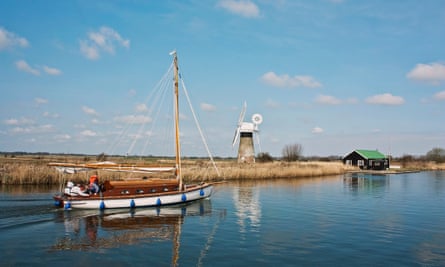
England’s only city that’s actually inside a national park has the River Wensum and Norfolk Broads within walking, cycling or even canoeing distance (kayaks from £20 for two hours from thecanoeman.com). Try windsurfing or paddle boarding just outside the city at Whitlingham country park (from £12 an hour), which also offers camping by the water (see below).
A single-track railway known as the Wherry Lines carries visitors through the watery landscape from Norwich to the coast (tickets from £3.90 single). Two trains stop each Sunday at remote Berney Arms station, which reopened in February 2020, and has no roads, simply miles of grass, reeds, water and isolated windmills. You can follow a riverside route into Great Yarmouth or explore a wilderness of geese, galloping hares and muntjac deer.
The city’s museum is re-medievalising its castle keep (it’s due to re-emerge triumphantly in late 2022), but the art gallery section is still open at a cheaper rate (twilight ticket £2) with an exhibition by John Crome, one of the Norwich School of landscape painters, who died 200 years ago last month). A 15-minute stroll, through the market and past the Catholic cathedral, brings you to the Victorian Plantation Garden (£2 adult, under-16s free) in an old chalk quarry, which is running Sunday teas, weekend plays and live music this summer. It’s a hidden dell of flowers and fountains among Italianate terraces and winding wooded paths.
Where to stay

Whitlingham Broad Campsite (pitch from £9.50 adult, den for 4 from £150) has tent pitches plus a yurt, a converted train carriage and (new for 2021) treehouse-style dens on stilts with firepits and hammocks.
In town, the Maid’s Head hotel (doubles from £105 room only), near the spectacular cathedral, is launching an Edwardian boat for cruises on the Wensum from June. The city’s Georgian brick Assembly House, opposite the Theatre Royal, is now a cookery school, hotel and cafe, serving elegant afternoon teas. For a pricey-but-tasteful stay (in every sense), the bedrooms (they’ve just added three more) have four posters, curved ceilings or private terraces (doubles from £162 B&B, with some all-inclusive deals for summer).
Perth
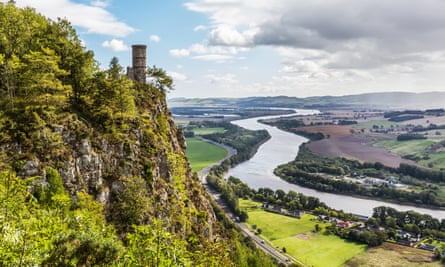
Surrounded by wild glens, forests and braes, walkable Perth is just the place to build up an appetite and has gathered several foodie accolades. Sit down to a three-course lunch at North Port for fish from Scrabster and Strathmore strawberries, or pick up a picnic from Provender Brown deli: wild hearth sourdough, ham from Puddledub farm in Fife or nutty Lanark White cheese, made from raw ewes’ milk. Then stroll by the River Tay, past the Black Watch museum (£9 adult, £6.90, child) or visit terraced Branklyn Garden (adult £7.50, child £6), with its fiery maples and azaleas, rare lilies and blue poppies, and climb neighbouring tower-topped Kinnoull Hill for 360-degree views.
There’s post-industrial stuff to explore at Stanley Mills, about eight miles north, including one of the world’s oldest surviving factories (£6 adult, £3.60 child). The newly wed Mary, Queen of Scots and Lord Darnley stayed at crow-stepped Huntingtower, just outside Perth. You pass it on the way to the market town of Crieff, 30 minutes’ drive or bus ride west through some great countryside. Stop off at Gordon & Durward on Crieff High Street for oh-so-sweet Scottish tablet, made in traditional copper boilers.

A few minutes outside the town, a fairytale avenue of beech trees with views over lochs and hills leads to the elegantly geometric formal gardens at Drummond Castle, open on summer afternoons and weekends (adult £10, child £4).
Scotland’s newest city got its status in 2012, but Perth was once the Scottish capital, with monarchs crowned at Scone Palace (from adult £10, child £6.50) for centuries – as mentioned in the last line of Macbeth. A mostly virtual Perth Arts festival (until 25 May) features drive-in cinema in the palace grounds, with crowd-pleasers such as Grease and Star Wars. In August, the Charlatans and Kaiser Chiefs are headlining the city’s huge Party at the Park, with more than 50 live bands.
Where to stay
The upmarket Townhouse (doubles from £105 B&B) is in an elegant Georgian terrace, or there’s glamping near Scone Palace (from £27 a night) until late September.
Chelmsford, Essex

This may seem an unlikely holiday destination, and the city itself may not detain you long, but there are beaches, ancient woodland, marshes, spectacular gardens and the barges and battle histories of Maldon within half an hour’s drive (or a slightly longer bus ride). The Saffron Trail, one of the best long-distance paths across a county rich in them, follows a green, riverside corridor through Chelmsford on its way to Saffron Walden. The opening miles, in Southend, run along cliffs above the world’s longest pleasure pier and through seafront gardens.
Detour for lunch into Leigh-on-Sea, where Osborne’s Seafood Kitchen serves cockles, samphire and seaweed-salted fries (£5) to eat on estuary-side tables (no booking). Nearby Two Tree Island is the place to spot wading birds, saltmarsh plants and a wrecked fishing boat/art-installation.
There’s more art in the woods around Danbury, one of several picturesque villages near Chelmsford. Infinity Forest, a tall kaleidoscope of mirrors surrounding a Scots pine sapling opened this April in Danbury country park. Don’t miss hilly, bluebell-carpeted (in April-May) Blakes Wood, down the road, and the gorse and heather-bright Danbury Commons.

RHS Hyde Hall garden is also an easy trip from Chelmsford, with scented roses and a dry garden blazing with orange poppies, yellow-green spurges and red-hot pokers (£12.15 adult, £6.75 child). At nearby Hanningfield reservoir, thousands of swifts, swallows and martins come swooping over the water from May to July. Stop off on the way back at Galleywood Vineyard, for tours with tasting and cream tea (from £20pp).
Also south of Chelmsford is the free-to-enter Hylands Estate, with formal flower beds and creeper-covered trellises and paths along the Serpentine Lake into wilder woods and hay fields. If it’s tipping down, check out Chelmsford’s free museum. Revamped in 2019, it showcases locally made artefacts such as Grayson Perry’s pots and early radio receivers from Marconi’s wireless factory (the first in the world).
